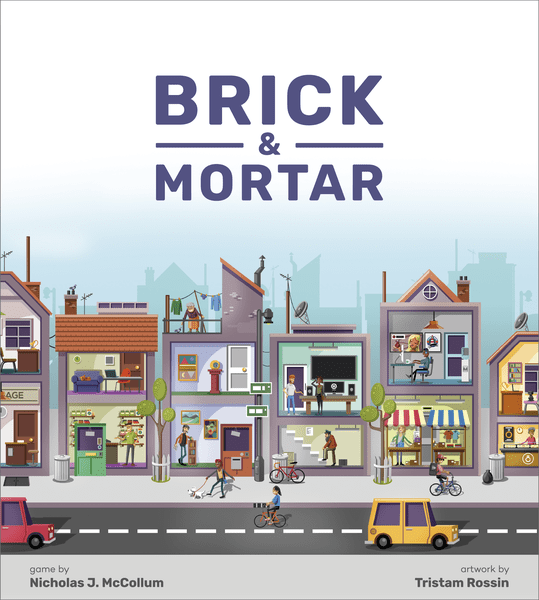Brick & Mortar (2021) Board Game
Brick & Mortar is a board game released in 2021, designed by Tristam Rossin and featuring artwork by Octoraffe Games. It falls under the economic category and is designed for 2-4 players aged 12 and above. The game involves auctioning, bidding, commodity speculation, hand management, and market mechanics, making it a strategic and engaging experience.
Game Components of Brick & Mortar
How To Setup Brick & Mortar
To set up the game, place the board in the center of the table. Arrange the cubes and money near the board. Set the month marker to January and the final month marker to October or September, depending on the number of players. The investment marker is placed on 45 or 35 points. The phase marker starts on the ‘building’ phase. Separate the starting stores from the regular store cards, shuffle them, and place four store cards face up along with one more card on top of the deck. Each player receives a player board, a bidding dial and screen in their color, $15, five market cards, and four store cards. Finally, each player places their point token on the ‘10’ space on the point track.
Gameplay Mechanics and Game Objective
Player Experience
In **Brick & Mortar**, players assume the role of enterprising store owners, expanding their reach into various markets. The game is characterized by simultaneous play, minimizing downtime between turns. The economic system is cleverly designed, making it engaging for both two and four players. However, the game has a significant learning curve due to its seven phases and complex rulebook. Despite this, the game includes numerous reminders to help players navigate the rules.
Pros
Cons
Personal Thoughts on Brick & Mortar
**Brick & Mortar** is ideal for players who enjoy strategic market manipulation and economic strategy games. It is particularly suited for those who appreciate complex gameplay and are willing to invest time in learning the rules. The game’s dynamic nature and simultaneous play make it engaging for both casual and experienced gamers, though it may not be the best fit for those seeking quick, light-hearted gaming sessions.
We are supported by our audience. When you purchase through links on our site, we may earn an affiliate commission, at no extra cost for you. Learn more.

